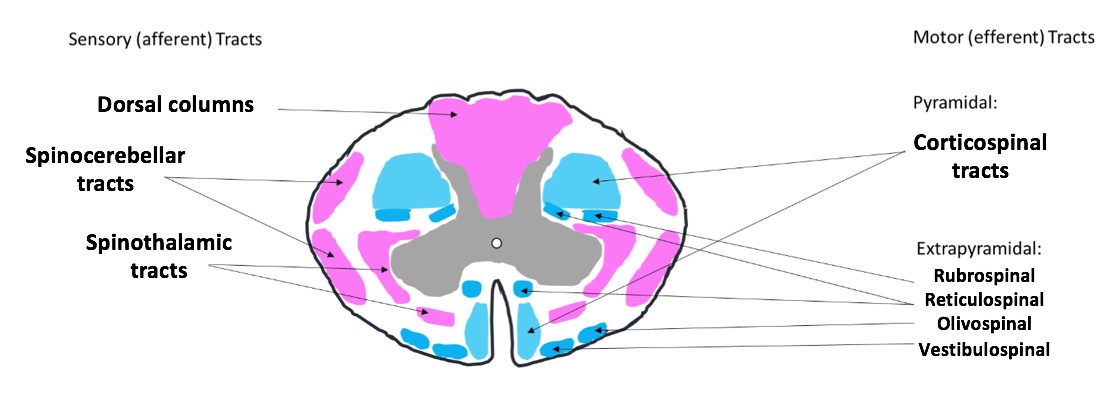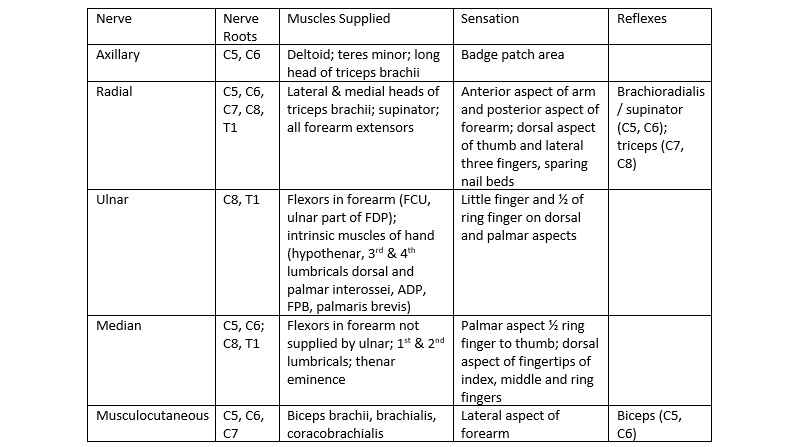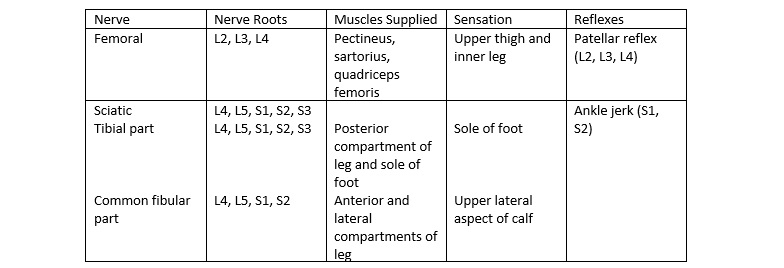|
The toughest questions in neurology are those that require candidates to localise various pathology to specific locations of the central nervous system. This tutorials is an aid when attempting to answer such questions:
The Anatomy: The Spinal Tracts

Sensory
These tracts begin as receptors in the skin/joints/muscles, and ascend towards the brain. They are afferent fibres.
- Spinothalamic tracts - carry crude touch, pain and temperature fibres. Cross over in spinal cord.
- Dorsal columns - carry fine touch, proprioception and vibration. Cross over in medulla.
- Spinocerebellar - carry joint position and proprioception (to cerebellum).
Motor
These tracts carry upper motor neurons and descend from the brain to the body. They are efferent fibres.
- Pyramidal
Corticospinal tracts - motor to the entire body. Cross over in the medullary pyramids.
- Extrapyramidal - These tracts have bilateral innervation, so damage to the right tract will not be clinically noticeable if the left tract is preserved. The below definitions are very simple and are just a guide to their function.
Rubrospinal tract - motor to upper limbs.
Reticulospinal tract - automatic movement e.g. maintaining posture.
Vestibulospinal tract - maintain balance.
Tectospinal tract - coordinates head and eye movements.
(Olivospinal tract - existence of this tract is doubted, but I had already drawn the spinal cord and a labelling arrow to this tract. Ignore it.)
Upper Limb - Named Nerves and their nerve roots

Lower Limb - Named Nerves and their nerve roots

Author:
Ms Alice Willison
| Speciality:
Neurology
| Date Added:
03/09/2017
|